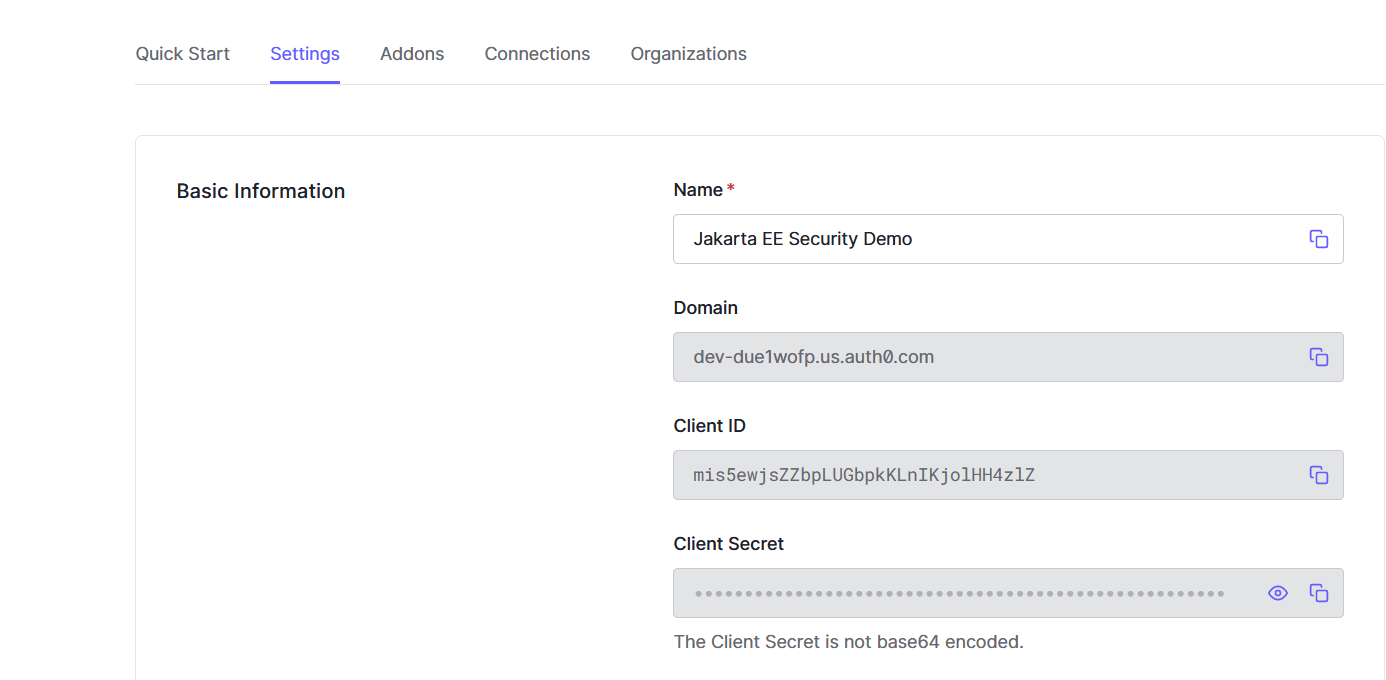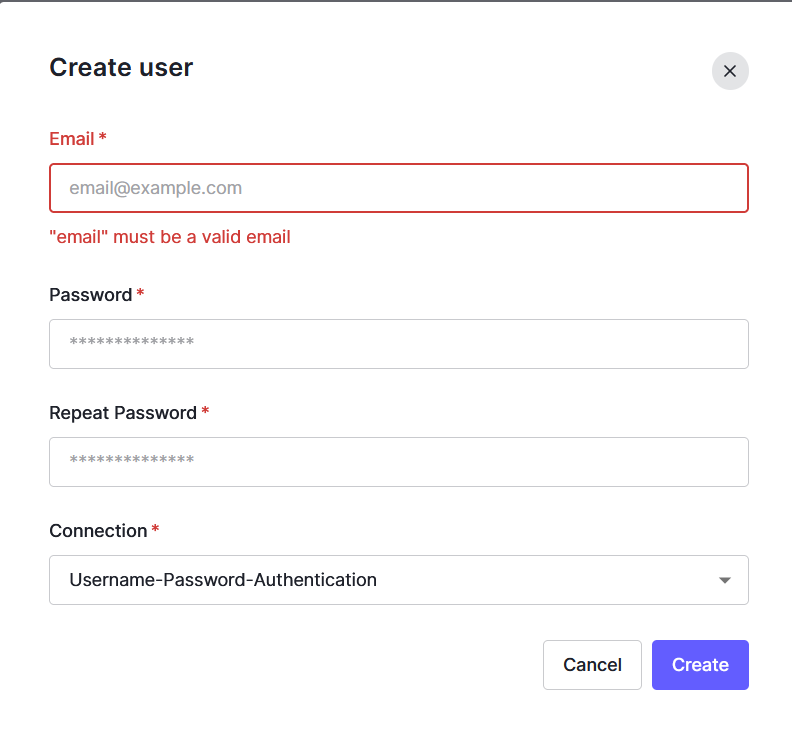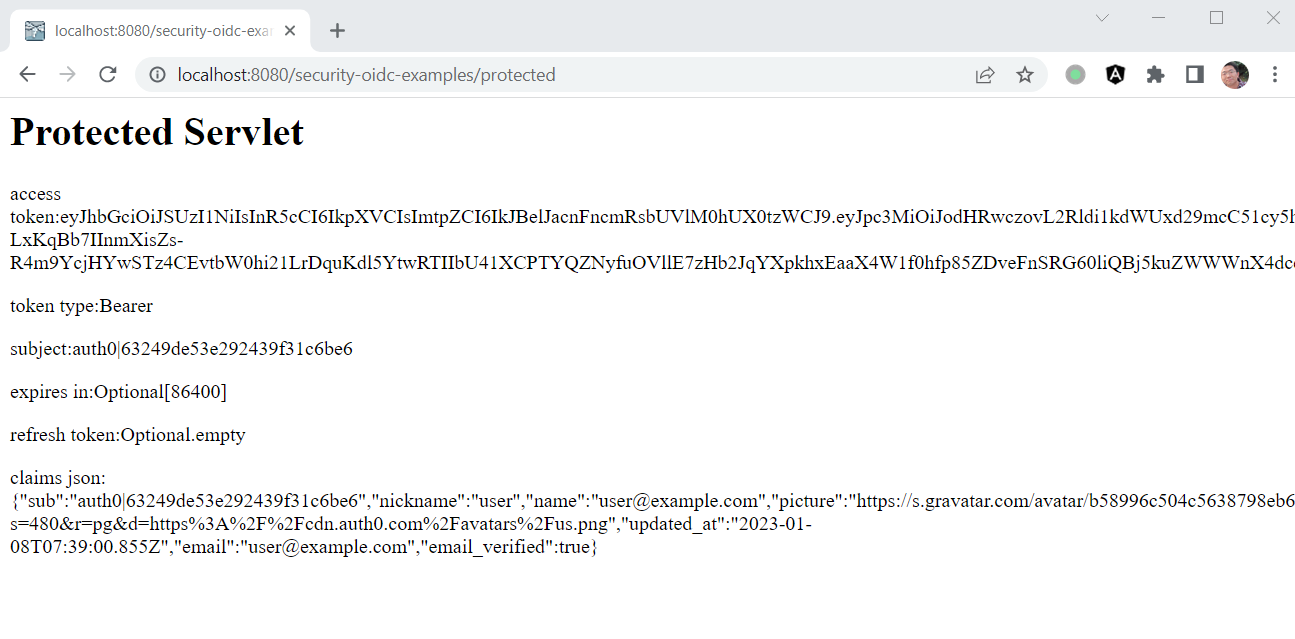Auth0¶
Auth0 is one of the most popular cloud IDP providers.
Next, We will try to use Auth0 to replace KeyCloak as our OAuth2/OIDC authentication server role in our Jakarta EE application.
If you do not have a Auth0 account, register one using email/password paire or using a existing social account, eg Google Accounts to log in.
Creating a Regular Web Application¶
After logged into the Auth0, let's try to create a client in Auth0.
Expand Applications/applications in the main menu, in the Applications page, click Create Application button in right top area.
In the popup dialog, input the application name, and select Regular Web Application, click Create button.

In the applications list, click the the newly created application. It will the application details.

In the Settings tab, you will find the clientId/clientSecrets that required to connect to Auth0 from our Jakarta EE application.
Scroll down the page, in the Application URIs section, find the Allowed Callback URLs field, add our Jakarta EE application callback URL - http://localhost:8080/security-oidc-examples/callback.

Creating Sample User¶
From the main menu, expand User management/users. In the users list page, click Create User button in the right top area to create a new user.

In the Create User dialog, fill the email and password, click Create button to create a new user.
In the users list page, click the newly created user to show the user details.
User the email info, there is a Edit link, click it, and click Set Email verified.
Running Jakarta EE application¶
Open the src/main/resources/oidc.properties, configure the Auth0 connection info.
# Auth0
domain=dev-due1wofp.us.auth0.com
clientId=uXNJPxVo1XgtMpZ8K97lvdEUUAFaa85u
clientSecret=PAqXSI5jh26T7QjB7lYyD9KKKv_nNrtB35s3F1iUTYfQ1VVBoyptXIA-99lCD-GN
Similarly build and run the application on WildFly.
After it is running successfully, open a browser, and navigate to localhost:8080/security-oidc-examples/protected.
Ideally, after logged in, it should redirect the original request URL localhost:8080/security-oidc-examples/protected.
But I always encounter an exception when redirecting to our Jakarta EE application.
15:13:34,809 ERROR [io.undertow.request] (default task-1) UT005023: Exception handling request to /security-oidc-examples/callback: java.lang.NullPointerException: Cannot invoke "com.nimbusds.jwt.JWTClaimsSet.getClaims()" because "jwtClaimsSet" is null
at org.glassfish.soteria@3.0.0//org.glassfish.soteria.mechanisms.openid.domain.AccessTokenImpl.<init>(AccessTokenImpl.java:64)
...
Unfortunately, I can not get any helpful information from the whole exception stack, see my original question posted on stackoverflow.
After doing some search on the Security implementation - soteria, and adding print exception stack clause in AccessTokenImpl, then replace the WildFly built-in one. I found there is a reading JWKS timeout exception. Beside this, sometime I also encountered a network connection issue when logging in, so it is possibly a network firewall issue from my side.
After customizing the attribute jwksReadTimeout and jwksConnectTimeout of the @OpenIdAuthenticationMechanismDefinition annotation, eg. increasing the value from the default 500 to 5000, finally I got it works successfully.
